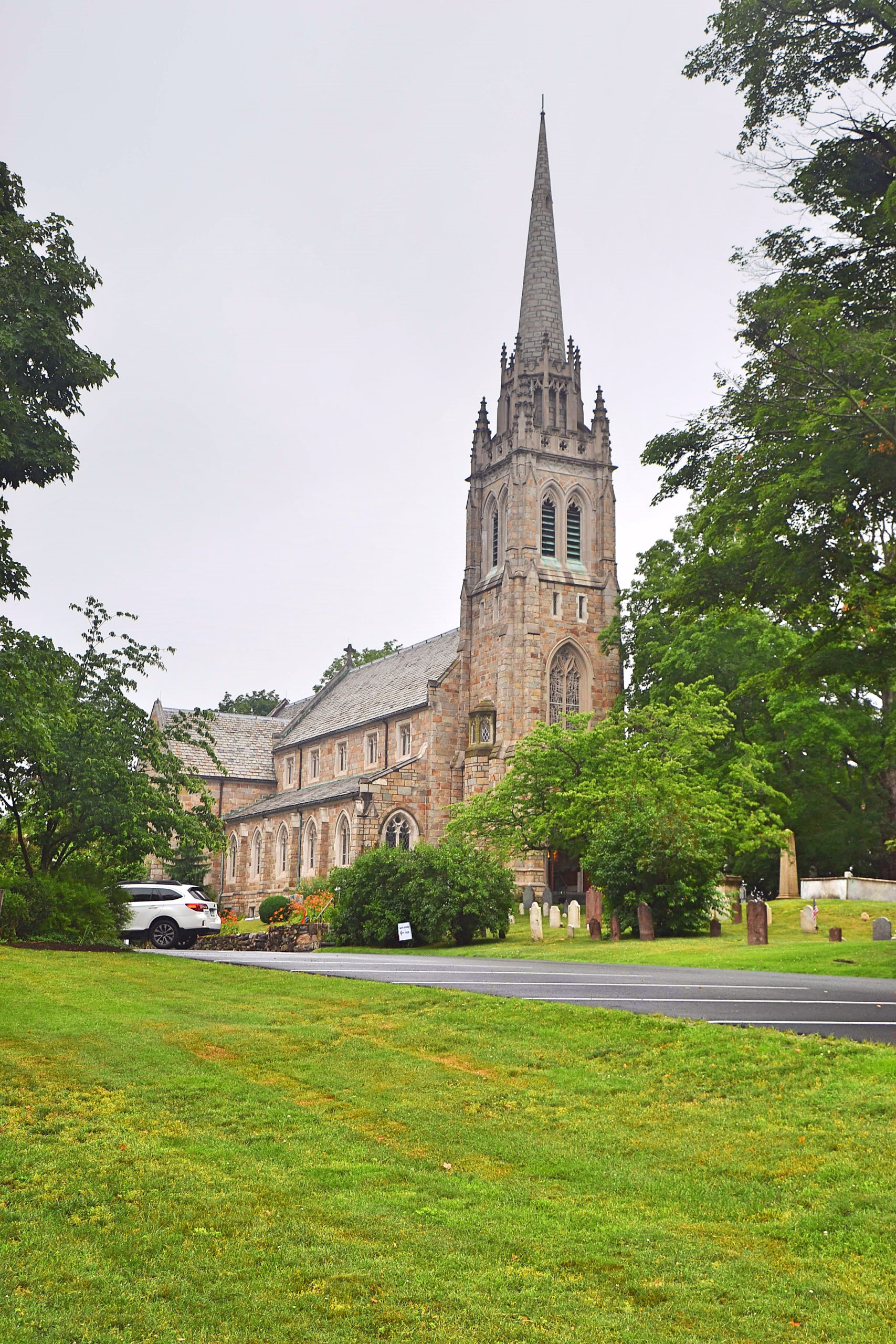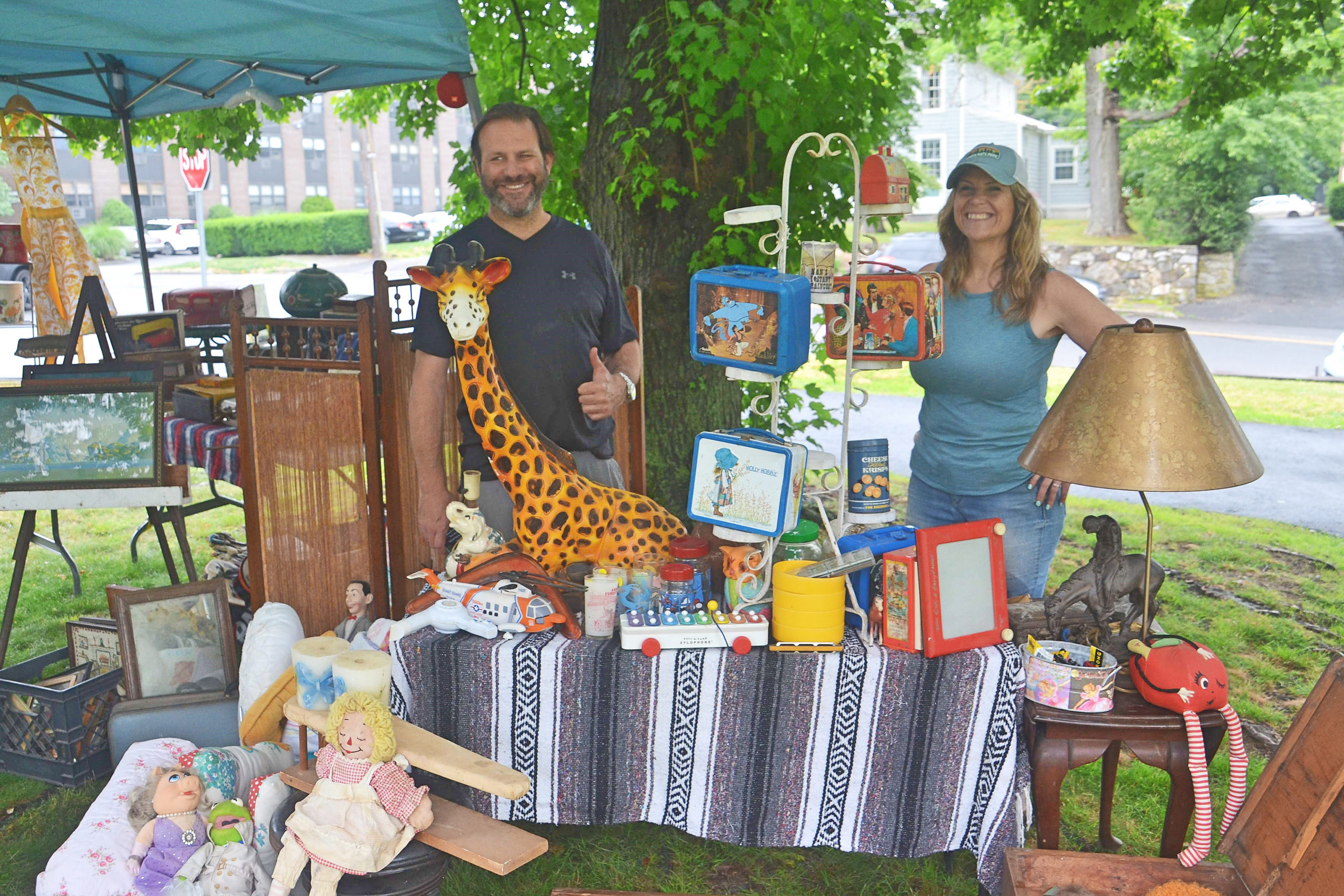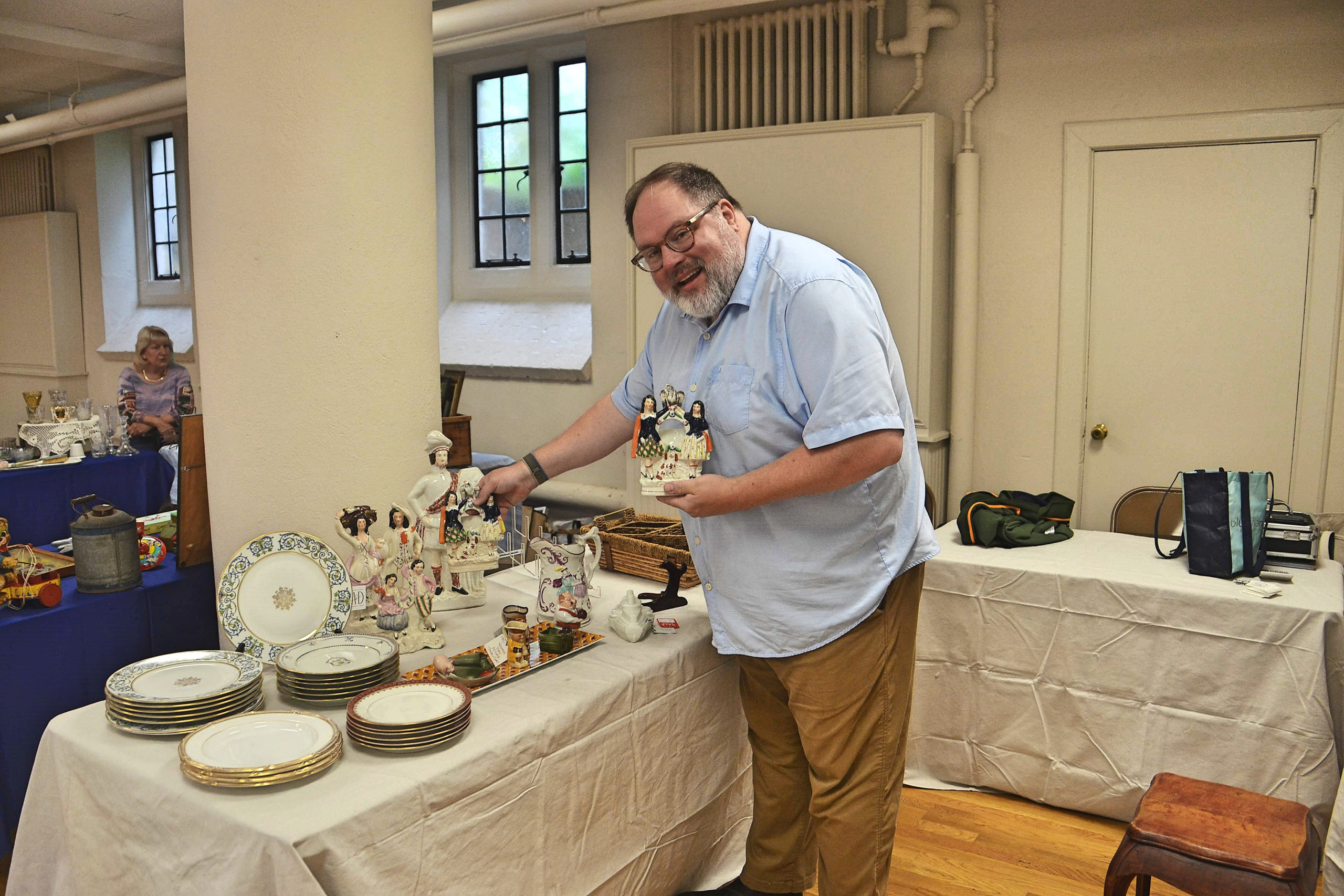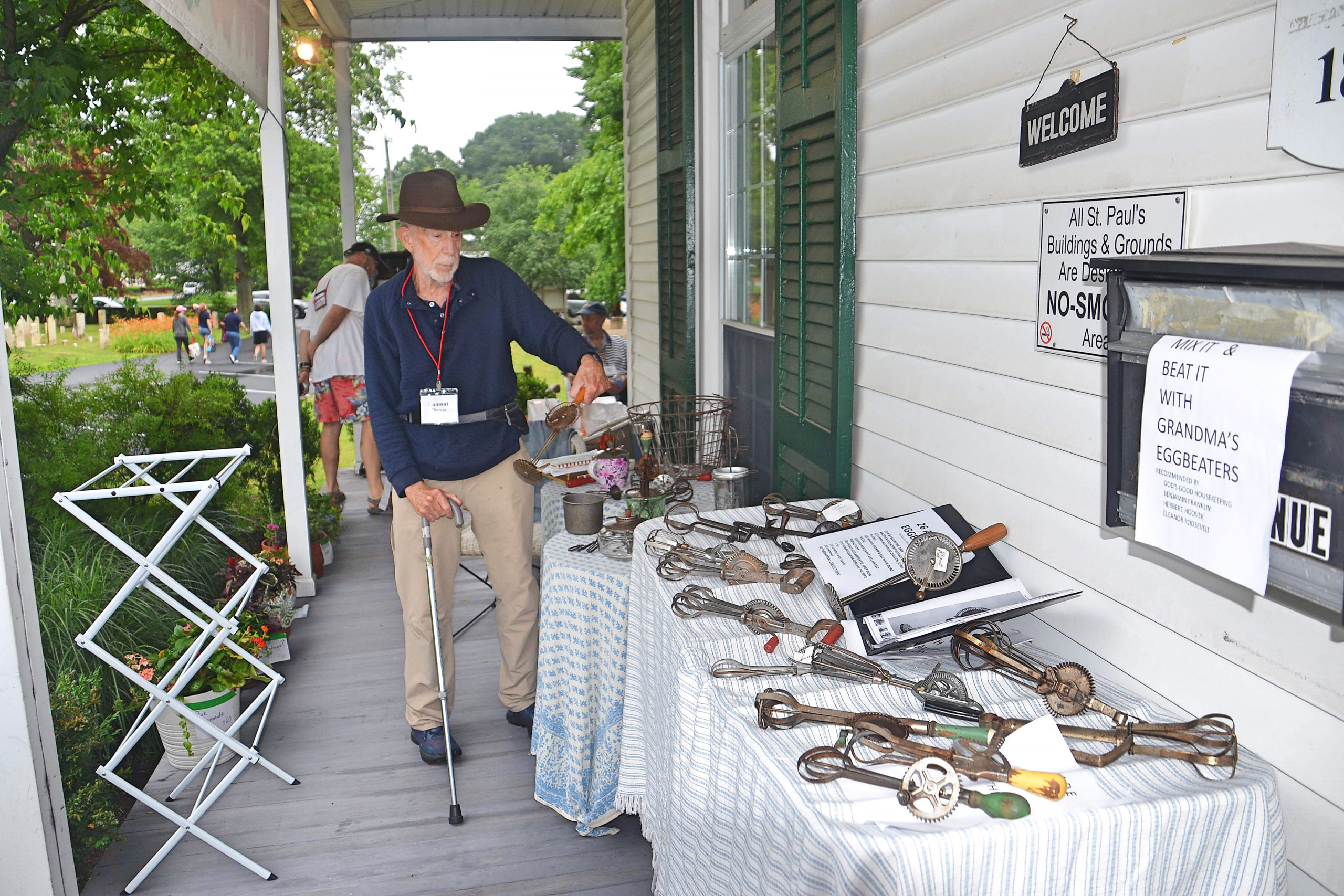
The stately Gothic-style St Pau’s on the Green was the backdrop for this inaugural show. Built of stone, it is modeled on a Thirteenth Century small English country church and was consecrated in 1930.
Review & Photos By W.A. Demers
NORWALK, CONN. — The inaugural Treasures in a Church Yard show opened at 9 am on an intermittently rainy June 24 around the periphery and campus of St Paul’s on the Green, a stately Gothic stone edifice modeled on a Thirteenth Century small English country church just off the intersection of East and North Avenues. Show manager Ginny Balser, a parishioner and one of the co-wardens of the vestry, was apologetic that just five dealers were set up here, but if one consulted a weather app, it was clear to see that the little cloud icons with blue droplets coming down were lined up for the remainder of the weekend and throughout the next week. And, in fact, it did brighten up later in the day. “For the first year and given the rain, we were quite pleased with the crowd and everyone who came seemed to walk away having bought something. We definitely want this to be an annual event in Norwalk towards the end of June,” said Balser.
With few dealers, most were able to set up under cover. There were two in the Undercroft or Parish Hall building, two on the wraparound porch of the Chittim-Howell House and an adventurous younger couple who set up under the protective branches of a large tree on the Park Street side of the church grounds.

Setting up under protective tree branches, Andy Semmel and Sarah Acheson, Fairfield County, Conn., unloaded an eclectic assortment of antiques and collectibles, including 1950s-60 school lunchboxes, dolls and stuffed animals, pottery and glassware.
There was another aspect of the show that augmented merchandise on offer by participating dealers. It was a White Elephant sale, chockful of donated antiques, vintage items and collectibles by St Paul parishioners, with proceeds going to the church. Inside the church house were tables set up around a large room displaying antique clocks, vintage porcelains and glassware, textiles, folk art, even an old Underwood manual typewriter. The sale “did better than we’d anticipated,” remarked Balser.
In a first of firsts, it was not only the inaugural show for its organizers, but down a set of stairs into the Parish Hall one found Betty and Brian Collette, a couple from Naugatuck with an attractively arranged table of antiques and antique toys for whom this was their first show ever. There was a theme to their display as many of the items stemmed from Waterbury, Conn., a city that resonates with them from its former industrial prowess. One interesting piece being offered by Betty was a dipping basket that survived from the Waterbury brass industry. Metal open-work baskets used by such companies to immerse parts in chemical solutions today make for attractive plant or yarn holders.
Brian, who grew up in Waterbury, is drawn to the mechanical toys and fancy frames made there. Among his display was a mechanical monkey toy called Climbing Monkey and a United Van Lines toy truck in great paint.

When not doing shows, Drewry Penn, shown here with some Staffordshire figurines, is proprietor of The Barony Collection, a shop he opened in Norwalk about one and half years ago during the pandemic. A source for heirloom antiques and vintage home decor, furnishings and accessories, he says he likes to find statement items that have “personality.”
Next to the Collettes, Drewry Penn, owner of The Barony Collection at the Fairfield County Antique & Design Center, offered an eye-catching display of vintage goods. An escapee from New York City during the Covid-19 pandemic, Penn opened his shop about a year and a half ago, first starting with a popup shop on Washington Street. He said he is drawn to fine porcelains, English chinoiserie, focusing on items that have “personality.” Often his clients search for statement pieces that command attention on that certain spot, be it a foyer, dining room or sitting room. He showed, for example, a pair of Nineteenth Century Staffordshire figurines that would be used as spill vases for greenery. He also has a fun mini collection of German ceramic pigs that were made as souvenirs and served whimsical purposes as bud vases or nut holders. Most interesting was a collection of antique metal frogs used for holding floral displays. At a recent show, he said, he could not keep up with the demand for these because today’s garden clubs prefer them over the troublesome foam blocks from the 1970s-80s.
Over on the wraparound porch of the Chittim-Howell House, Lamont Thomas was holding court with his sizeable collection of antique and vintage egg beaters, all of which, he proudly proclaimed, were “Made in the USA.” He said he rediscovered the “amazing variety” of these kitchen tools about 20 years ago prowling the fields at Brimfield. Lately, his wife told him he needed to skinny down his collection. He noted that while today we mostly get our pancakes out of a box, in the early 1900s they were made from scratch, and he observed an interesting sociological side story in that it was mostly the wealthy that had kitchen help who would be using these tools. For his part, he still uses his favorite — a Whip-It from Chicago — and has his own scratch recipe that’s been published.

Lamont Thomas of Milford, Conn., related how his wife told him that it was time to thin out his prodigious collection of antique egg beaters, which he began to assemble some 20 years ago at Brimfield. He said that his collection revealed “the amazing variety of egg beaters.”
Lessons learned from the inaugural show? Balser concluded, “I think publicity is key. We had a wonderful person doing publicity and I think we can probably do better than we did to get dealers to want to come and to get the public to realize that we’ve really got some treasures.”
For information, 203-470-7470 or email gfarrarbalser@gmail.com.












